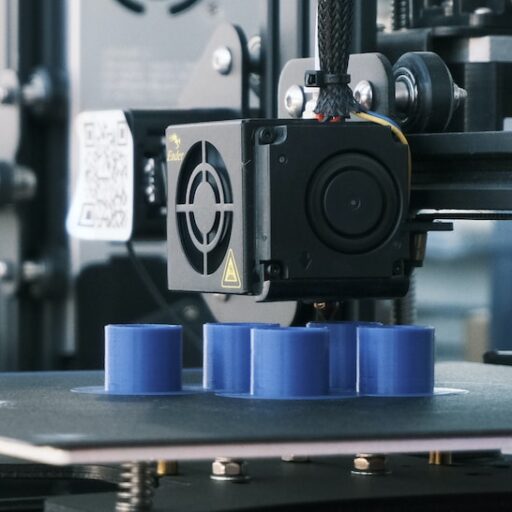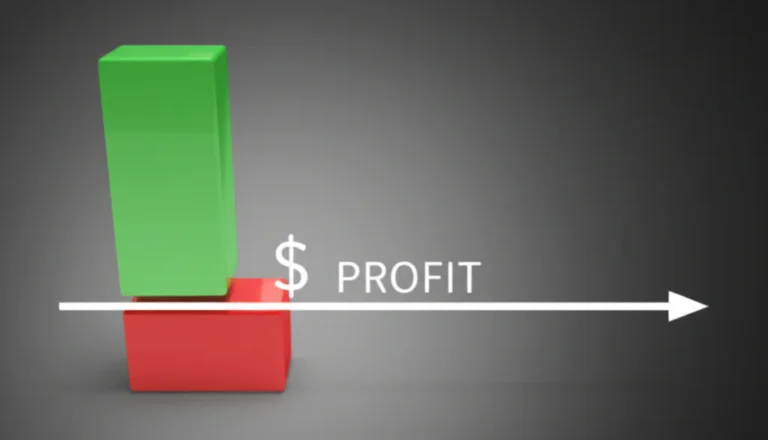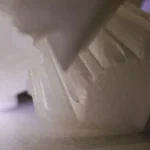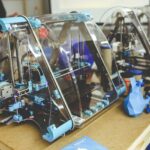Support our educational content for free when you purchase through links on our site. Learn more
How Much Money Can You Make 3D Printing? 14+ Ways to Profit in 2025 💸
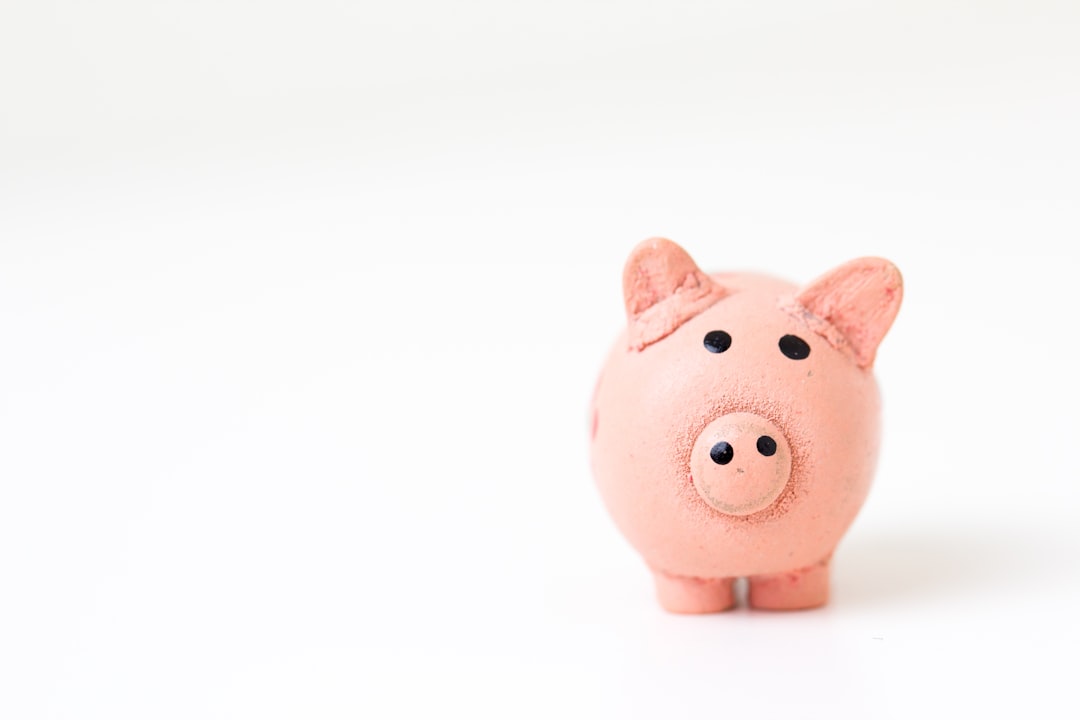
Imagine turning your desktop 3D printer from a curious gadget into a steady income stream—whether it’s a side hustle or a full-time gig. Did you know the global 3D printing market is projected to hit $150 billion by 2032? That’s a goldmine of opportunity waiting for creative makers like you! But how much money can you really make with 3D printing in 2025? Spoiler alert: it’s more than just pocket change.
In this comprehensive guide, we’ll uncover 14+ proven ways to monetize your 3D printer, from selling custom jewelry and cosplay props to offering prototyping services and digital model sales. We’ll break down the costs, the best printers to start with, and insider tips to maximize your earnings. Whether you’re dreaming of launching an Etsy shop or consulting for startups, this article will give you the roadmap to turn layers of filament into layers of cash. Ready to unlock your 3D printing profit potential? Let’s dive in!
Key Takeaways
- 3D printing offers diverse income streams: selling physical products, digital designs, services, and education.
- Choosing the right printer matters: popular models like Creality Ender 3 and Formlabs Form 3 suit different needs and budgets.
- Customization and niche markets boost profits, from cosplay to medical applications.
- Marketing and pricing strategies are critical to stand out and maximize earnings.
- Scaling your business gradually can turn a hobby into a lucrative career.
CHECK PRICE on popular 3D printers:
- Creality Ender 3: Amazon | Walmart | Creality Official Website
- Formlabs Form 3: Formlabs Official Website
- Prusa i3 MK3S: Prusa Research Official Website
Table of Contents
- ⚡️ Quick Tips and Facts: Your Fast Track to 3D Printing Profits
- 🚀 The Evolution of 3D Printing: From Hobbyist Dreams to Lucrative Ventures
- 💰 Decoding the 3D Printing Market: Where Are the Opportunities?
- 📈 Factors Influencing Your 3D Printing Income: What Really Moves the Needle?
- 💸 The Real Costs of Starting a 3D Printing Business: Beyond Just the Printer
- Top 14+ Proven Ways to Make Money with a 3D Printer: From Side Hustle to Full-Time Fortune!
- 1. 🛍️ Selling 3D Printed Products Online: E-commerce Empire Building
- 2. 🛠️ Offering On-Demand 3D Printing Services: Your Local Print Shop
- 3. 🎨 Designing and Selling 3D Models (STLs): The Digital Goldmine
- 4. 💡 Prototyping and Product Development for Businesses: Innovation Partners
- 5. ✨ Customization and Personalization Services: Tailored for Success
- 6. 🎓 Educational Workshops and Training: Sharing the Knowledge, Earning the Dough
- 7. 🏭 Industrial and Specialized Applications: High-Value Niche Markets
- 8. 🖼️ Creating and Selling 3D Printed Art and Jewelry: Wearable Wonders
- 9. 🦸 Cosplay Props and Replicas: Bringing Fandom to Life
- 10. 🔩 Spare Parts and Repairs: The Practical Problem Solvers
- 11. 🦷 Medical and Dental Applications (Niche): Precision and Health
- 12. 🏗️ Architectural Models and Miniatures: Building Dreams, One Layer at a Time
- 13. 🎲 Board Game Components and Miniatures: Level Up Your Gaming
- 14. 🎁 Event Favors and Promotional Items: Making Memories Tangible
- 📣 Marketing and Selling Your 3D Printed Creations: Getting Noticed and Getting Paid
- 🚀 Scaling Your 3D Printing Business: From Hobby Desk to Production Powerhouse
- ⚖️ Legal and Business Considerations for 3D Printing Entrepreneurs: Stay Compliant, Stay Profitable
- 🚧 Common Pitfalls and How to Avoid Them: Navigating the Bumps on Your Path to Profit
- 🌟 Success Stories and Inspiration: Real People, Real Profits
- 🏁 Conclusion: Your 3D Printing Profit Journey Awaits!
- 🔗 Recommended Links: Dive Deeper into 3D Printing Business
- ❓ Frequently Asked Questions (FAQ): Your Burning 3D Printing Business Queries Answered
- 📚 Reference Links: The Data Behind the Dream
⚡️ Quick Tips and Facts: Your Fast Track to 3D Printing Profits
Want to make money with a 3D printer? You’re not alone! The 3D printing market is booming, with opportunities for everyone from hobbyists to entrepreneurs. But before you dive in, let’s get the basics down:
3D Printing: A Quick Refresher
3D printing is a technology that creates three-dimensional objects from a digital design. It’s like a magic wand, turning your ideas into reality! You start with a digital model, usually in a format called an STL file, and then a 3D printer builds the object layer by layer, using materials like plastic, resin, metal, or even food.
3D Printing: More Than Just a Hobby
While 3D printing started as a hobbyist pursuit, it’s now a powerful tool for businesses and individuals alike. You can use it to:
- Create custom products: Imagine designing and selling your own jewelry, toys, or home decor!
- Offer on-demand printing services: Help local businesses prototype products or create unique gifts.
- Design and sell digital models: Share your creativity and earn royalties on every download.
- Prototype and develop new products: Bring your innovative ideas to life faster and more affordably.
3D Printing: A World of Opportunities
The possibilities are endless! You can use 3D printing to:
- Create personalized gifts: Imagine a 3D-printed portrait of your loved one or a custom-designed phone case.
- Repair broken parts: Need a replacement part for your old appliance? 3D printing can save you time and money.
- Build your own business: Turn your passion for 3D printing into a full-time income stream.
3D Printing: A Growing Market
The global 3D printing market is expected to reach $150 billion by 2032! That’s a lot of potential for growth and profit.
Ready to learn more? Let’s dive into the history of 3D printing and how it’s evolved into the lucrative industry it is today.
🚀 The Evolution of 3D Printing: From Hobbyist Dreams to Lucrative Ventures
3D printing, also known as additive manufacturing, has come a long way since its humble beginnings. It’s no longer just a futuristic concept; it’s a reality that’s transforming industries and empowering individuals.
The Early Days of 3D Printing: A Vision Takes Shape
The roots of 3D printing can be traced back to the 1980s, with the development of stereolithography (SLA), a process that uses a UV laser to solidify liquid resin layer by layer. This breakthrough opened the door to creating complex three-dimensional objects from digital models.
The Rise of Fused Deposition Modeling (FDM): Making 3D Printing Accessible
The 1990s saw the introduction of fused deposition modeling (FDM), a more affordable and accessible 3D printing technology. FDM uses a heated nozzle to extrude molten plastic filament, building objects layer by layer. This technology made 3D printing more accessible to hobbyists and small businesses, paving the way for its widespread adoption.
The 3D Printing Revolution: From Prototyping to Production
The 2000s witnessed a surge in 3D printing innovation, with the development of new materials, processes, and applications. 3D printing moved beyond prototyping and into production, enabling the creation of functional parts, tools, and even medical implants.
The Future of 3D Printing: A World of Possibilities
Today, 3D printing is a rapidly evolving field, with advancements in speed, accuracy, and material diversity. It’s being used in a wide range of industries, from aerospace and automotive to healthcare and education. The future of 3D printing is bright, with the potential to revolutionize manufacturing, design, and even our everyday lives.
Intrigued by the possibilities? Let’s explore the current 3D printing market and identify the most promising opportunities for making money.
💰 Decoding the 3D Printing Market: Where Are the Opportunities?
The 3D printing market is a dynamic landscape, with new technologies, applications, and business models emerging all the time. To make money in this exciting space, you need to understand the key trends and identify the most lucrative opportunities.
The 3D Printing Market: A Global Phenomenon
The global 3D printing market is expected to grow significantly in the coming years, driven by factors such as:
- Increased adoption in various industries: From aerospace and automotive to healthcare and education, 3D printing is finding its way into a wide range of sectors.
- Advancements in technology: New 3D printing technologies are emerging, offering faster printing speeds, higher accuracy, and a wider range of materials.
- Growing demand for customization and personalization: Consumers are increasingly seeking products tailored to their specific needs and preferences, and 3D printing can deliver on this demand.
The 3D Printing Market: Key Players and Trends
The 3D printing market is dominated by a few key players, including:
- Stratasys: A leading provider of 3D printing solutions for various industries, including aerospace, automotive, and healthcare.
- 3D Systems: A pioneer in 3D printing technology, offering a wide range of products and services.
- HP: A major player in the 3D printing market, focusing on industrial and consumer applications.
- Ultimaker: A leading provider of desktop 3D printers, known for their ease of use and affordability.
The 3D Printing Market: Identifying Opportunities
To make money in the 3D printing market, you need to identify the most promising opportunities. Here are a few key areas to consider:
- Selling 3D-printed products: There’s a growing demand for unique and personalized products, and 3D printing can help you meet this demand.
- Offering on-demand printing services: Local businesses and individuals are increasingly looking for quick and affordable prototyping and production solutions.
- Designing and selling digital models: Share your creativity and earn royalties on every download of your 3D models.
- Providing 3D printing consulting services: Help businesses and individuals navigate the world of 3D printing and find the right solutions for their needs.
Ready to explore these opportunities in more detail? Let’s dive into the factors that influence your 3D printing income and how you can maximize your earnings.
📈 Factors Influencing Your 3D Printing Income: What Really Moves the Needle?
Making money with a 3D printer isn’t just about buying a printer and hitting “print.” Several factors influence your income, and understanding these factors is crucial for success.
1. The Right 3D Printer: Your Printing Powerhouse
Choosing the right 3D printer is essential for your success. Consider these factors:
- Print volume: How big are the objects you want to print? Larger print volumes allow you to create bigger and more complex designs.
- Print resolution: The higher the resolution, the more detailed and intricate your prints will be.
- Material compatibility: What materials do you want to work with? Different printers support different materials, such as plastic, resin, metal, and even food.
- Ease of use: How comfortable are you with technology? Some printers are easier to use than others.
- Price: Set a budget and choose a printer that fits your needs and financial constraints.
Here are some popular 3D printer brands to consider:
- Creality: Known for their affordable and reliable FDM printers, like the Ender 3 and the CR-10.
- Prusa Research: Offers high-quality FDM printers, known for their accuracy and ease of use, like the Original Prusa i3 MK3S.
- Formlabs: A leading provider of SLA printers, known for their high resolution and detail, like the Form 3.
- Ultimaker: Offers a range of FDM printers, known for their ease of use and versatility, like the Ultimaker 2+ and the Ultimaker S5.
👉 CHECK PRICE on:
- Creality Ender 3: Amazon | Walmart | Creality Official Website
- Prusa Research Original Prusa i3 MK3S: Prusa Research Official Website
- Formlabs Form 3: Formlabs Official Website
- Ultimaker Ultimaker 2+: Ultimaker Official Website
Remember: The right 3D printer for you depends on your specific needs and budget. Do your research and choose a printer that will help you achieve your goals.
2. Mastering 3D Design: Your Creative Edge
To create 3D-printed objects, you need to know how to design them. Here are some options:
- Learn 3D modeling software: Popular options include Blender, Fusion 360, and Tinkercad. These programs allow you to create complex 3D models from scratch.
- Use pre-designed models: There are many free and paid 3D models available online, on platforms like Thingiverse and Cults3D. You can download these models and print them as is or customize them to your liking.
- Hire a 3D designer: If you’re not comfortable with 3D design, you can hire a professional to create models for you.
Tip: Start with a simple 3D modeling program like Tinkercad to get a feel for the process. As you become more comfortable, you can explore more advanced software like Blender or Fusion 360.
3. The Power of Marketing: Getting Your Products Seen
Once you’ve created your 3D-printed products, you need to get them in front of potential customers. Here are some effective marketing strategies:
- Online marketplaces: Platforms like Etsy, Amazon Handmade, and eBay offer a great way to reach a wide audience.
- Social media: Use platforms like Instagram, Facebook, and Pinterest to showcase your products and connect with potential customers.
- Local events: Attend craft fairs, maker markets, and other events to sell your products in person.
- Website: Create a website to showcase your products and provide information about your business.
Tip: Use high-quality photos and videos to showcase your products in the best possible light. Engage with your customers on social media and respond to their questions and comments promptly.
4. Pricing Your Products: Finding the Sweet Spot
Pricing your 3D-printed products is a delicate balance. You need to consider:
- Material costs: The cost of the materials used to print your products.
- Printing time: The time it takes to print your products.
- Labor costs: The time and effort involved in designing, printing, and finishing your products.
- Competition: The prices of similar products offered by other sellers.
- Profit margin: The amount of profit you want to make on each sale.
Tip: Start by researching the prices of similar products on online marketplaces. Consider offering a range of price points to cater to different budgets.
5. Scaling Your Business: From Hobbyist to Entrepreneur
As your 3D printing business grows, you may need to scale your operations. This could involve:
- Investing in more printers: To handle increased demand, you may need to purchase additional 3D printers.
- Hiring staff: As your business grows, you may need to hire employees to help with design, printing, marketing, and customer service.
- Improving your workflow: Streamline your processes to increase efficiency and productivity.
Tip: Start small and grow gradually. Don’t be afraid to experiment and learn from your mistakes.
Ready to learn about some specific ways to make money with a 3D printer? Let’s dive into the top 14+ proven methods that can turn your passion into profit.
Top 14+ Proven Ways to Make Money with a 3D Printer: From Side Hustle to Full-Time Fortune!
The world of 3D printing offers a diverse range of opportunities to make money. From selling your creations online to providing specialized services, there’s a path for everyone. Let’s explore some of the most popular and profitable ways to turn your 3D printer into a money-making machine.
1. 🛍️ Selling 3D Printed Products Online: E-commerce Empire Building
The dream: Creating unique, personalized products that people love and buy.
The reality: Selling 3D-printed products online is a popular way to make money. You can sell anything from jewelry and toys to home decor and functional parts.
Here’s how to get started:
- Identify a niche: What are you passionate about? What products are in high demand? Consider your skills, interests, and the market potential.
- Design and create your products: Use 3D modeling software to design your products or find pre-designed models online.
- Choose a platform: Platforms like Etsy, Amazon Handmade, and eBay offer a great way to reach a wide audience.
- Market your products: Use high-quality photos and videos to showcase your products. Engage with potential customers on social media and respond to their questions and comments promptly.
- Price your products competitively: Consider your material costs, printing time, and labor costs. Research the prices of similar products on online marketplaces.
Success stories:
- Etsy: Many successful Etsy sellers have made a significant income selling 3D-printed jewelry, toys, and home decor.
- Amazon Handmade: Amazon Handmade is a great platform for selling handcrafted and unique products, including 3D-printed items.
Tips:
- Offer customization: Allow customers to personalize their products with their names, initials, or special designs.
- Provide excellent customer service: Respond to customer inquiries promptly and address any issues quickly and professionally.
- Stay up-to-date with trends: Keep an eye on the latest trends in 3D printing and design to stay ahead of the competition.
Ready to take your online selling to the next level? Let’s explore another popular way to make money with a 3D printer: offering on-demand printing services.
2. 🛠️ Offering On-Demand 3D Printing Services: Your Local Print Shop
The dream: Helping local businesses and individuals bring their ideas to life.
The reality: Offering on-demand 3D printing services is a great way to make money and serve your community. You can provide services like:
- Prototyping: Help businesses create prototypes of new products quickly and affordably.
- Custom parts: Create replacement parts for broken appliances, tools, or other items.
- Personalized gifts: Design and print unique gifts for birthdays, weddings, or other special occasions.
Here’s how to get started:
- Identify your target market: Who are you going to serve? Local businesses, individuals, or both?
- Create a portfolio: Showcase your skills and experience by creating a portfolio of your work.
- Set your prices: Consider your material costs, printing time, and labor costs. Research the prices of similar services in your area.
- Market your services: Create a website or online presence to promote your services. Network with local businesses and individuals.
Success stories:
- Local makerspaces: Many makerspaces offer on-demand 3D printing services to their members and the community.
- Small businesses: Some small businesses have successfully incorporated 3D printing into their operations, offering custom parts and prototypes to their customers.
Tips:
- Provide excellent customer service: Communicate clearly with your clients, provide accurate estimates, and meet deadlines.
- Offer a variety of services: Expand your service offerings to meet the needs of your clients.
- Stay up-to-date with technology: Keep an eye on the latest advancements in 3D printing to offer the most cutting-edge services.
Ready to explore the world of digital design? Let’s delve into the exciting opportunity of designing and selling 3D models.
3. 🎨 Designing and Selling 3D Models (STLs): The Digital Goldmine
The dream: Sharing your creativity and earning royalties on every download of your 3D models.
The reality: Selling 3D models online is a great way to make passive income. You can sell your designs on platforms like Thingiverse, Cults3D, and MyMiniFactory.
Here’s how to get started:
- Learn 3D modeling software: Popular options include Blender, Fusion 360, and Tinkercad.
- Design your models: Create unique and interesting 3D models that people will want to download and print.
- Choose a platform: Platforms like Thingiverse, Cults3D, and MyMiniFactory offer a great way to reach a wide audience.
- Price your models: Consider the complexity of your models and the demand for similar designs.
- Market your models: Use high-quality images and descriptions to showcase your models. Engage with potential customers on social media and respond to their questions and comments promptly.
Success stories:
- Thingiverse: Many successful designers have made a significant income selling their 3D models on Thingiverse.
- Cults3D: Cults3D is a popular platform for selling 3D models, with a focus on high-quality designs.
Tips:
- Create high-quality models: Use detailed modeling techniques and ensure your models are well-optimized for printing.
- Offer different file formats: Provide your models in various file formats, such as STL, OBJ, and FBX.
- Protect your intellectual property: Use watermarks and licensing terms to protect your designs.
Ready to put your 3D printing skills to work for businesses? Let’s explore the opportunity of providing prototyping and product development services.
4. 💡 Prototyping and Product Development for Businesses: Innovation Partners
The dream: Helping businesses bring their innovative ideas to life.
The reality: Many businesses need help prototyping and developing new products. You can offer your 3D printing expertise to help them create functional prototypes, test designs, and refine their ideas.
Here’s how to get started:
- Identify your target market: What industries are you interested in? What types of products do you want to work on?
- Build a portfolio: Showcase your skills and experience by creating a portfolio of your work.
- Network with businesses: Attend industry events, connect with businesses online, and reach out to potential clients.
- Set your prices: Consider your material costs, printing time, and labor costs. Research the prices of similar services in your area.
Success stories:
- Startups: Many startups rely on 3D printing to create prototypes and test their designs.
- Established businesses: Even established businesses are increasingly using 3D printing for prototyping and product development.
Tips:
- Provide excellent customer service: Communicate clearly with your clients, provide accurate estimates, and meet deadlines.
- Offer a variety of services: Expand your service offerings to meet the needs of your clients.
- Stay up-to-date with technology: Keep an eye on the latest advancements in 3D printing to offer the most cutting-edge services.
Ready to add a personal touch to your products? Let’s explore the opportunity of offering customization and personalization services.
5. ✨ Customization and Personalization Services: Tailored for Success
The dream: Creating unique and personalized products that customers love.
The reality: People are increasingly seeking products that are tailored to their specific needs and preferences. You can offer customization and personalization services to meet this demand.
Here’s how to get started:
- Identify your niche: What types of products can you customize? Jewelry, phone cases, home decor, or other items?
- Develop your customization options: Offer a range of customization options, such as different colors, materials, designs, and engravings.
- Market your services: Create a website or online presence to promote your services. Use social media to showcase your work and connect with potential customers.
Success stories:
- Etsy: Many Etsy sellers offer customization and personalization services for their 3D-printed products.
- Local businesses: Some local businesses have successfully incorporated customization and personalization services into their operations.
Tips:
- Provide excellent customer service: Communicate clearly with your clients, provide accurate estimates, and meet deadlines.
- Offer a variety of customization options: Expand your customization options to meet the needs of your clients.
- Use high-quality materials: Choose durable and high-quality materials to ensure your products last.
Ready to share your 3D printing knowledge with others? Let’s explore the opportunity of teaching workshops and training courses.
6. 🎓 Educational Workshops and Training: Sharing the Knowledge, Earning the Dough
The dream: Sharing your passion for 3D printing and helping others learn.
The reality: There’s a growing demand for 3D printing education and training. You can offer workshops, courses, and one-on-one coaching to help people learn the basics of 3D printing, design, and printing.
Here’s how to get started:
- Identify your target audience: Who are you going to teach? Beginners, intermediate users, or advanced users?
- Develop your curriculum: Create a comprehensive curriculum that covers the essential skills and knowledge.
- Choose a format: Offer workshops, online courses, or one-on-one coaching.
- Market your services: Create a website or online presence to promote your services. Use social media to connect with potential students.
Success stories:
- Online platforms: Platforms like Udemy and Skillshare offer a great way to reach a global audience.
- Local makerspaces: Many makerspaces offer 3D printing workshops and classes to their members and the community.
Tips:
- Provide hands-on experience: Give students the opportunity to use 3D printers and design software.
- Offer personalized feedback: Provide individual feedback to students to help them improve their skills.
- Stay up-to-date with technology: Keep an eye on the latest advancements in 3D printing to offer the most relevant training.
Ready to explore the world of specialized applications? Let’s delve into the high-value niche markets where 3D printing is making a big impact.
7. 🏭 Industrial and Specialized Applications: High-Value Niche Markets
The dream: Leveraging your 3D printing expertise to solve complex problems in specialized industries.
The reality: 3D printing is being used in a wide range of industries, from aerospace and automotive to healthcare and education. You can specialize in a particular industry and offer your services to businesses in that sector.
Here are some examples of specialized applications:
- Aerospace: 3D printing is used to create lightweight and durable parts for aircraft and spacecraft.
- Automotive: 3D printing is used to create custom parts for vehicles, including prototypes, tooling, and even production parts.
- Healthcare: 3D printing is used to create medical devices, implants, and prosthetics.
- Education: 3D printing is used to create educational tools, models, and prototypes.
Here’s how to get started:
- Identify your niche: What industry are you interested in? What types of products or services can you offer?
- Develop your expertise: Learn about the specific needs and challenges of the industry you’re targeting.
- Network with businesses: Attend industry events, connect with businesses online, and reach out to potential clients.
- Set your prices: Consider your material costs, printing time, and labor costs. Research the prices of similar services in your area.
Success stories:
- Aerospace companies: Many aerospace companies are using 3D printing to create custom parts for their aircraft and spacecraft.
- Medical device companies: Medical device companies are using 3D printing to create personalized implants and prosthetics.
Tips:
- Provide excellent customer service: Communicate clearly with your clients, provide accurate estimates, and meet deadlines.
- Offer a variety of services: Expand your service offerings to meet the needs of your clients.
- Stay up-to-date with technology: Keep an eye on the latest advancements in 3D printing to offer the most cutting-edge services.
Ready to unleash your artistic side? Let’s explore the opportunity of creating and selling 3D-printed art and jewelry.
8. 🖼️ Creating and Selling 3D Printed Art and Jewelry: Wearable Wonders
The dream: Turning your artistic vision into tangible, wearable creations.
The reality: 3D printing opens up a world of possibilities for creating unique and beautiful art and jewelry. You can sell your creations online, at craft fairs, or through galleries.
Here’s how to get started:
- Develop your artistic style: What kind of art or jewelry do you want to create? What materials will you use?
- Design your pieces: Use 3D modeling software to design your art and jewelry.
- Choose a platform: Platforms like Etsy, Amazon Handmade, and eBay offer a great way to reach a wide audience.
- Market your creations: Use high-quality photos and videos to showcase your work. Engage with potential customers on social media and respond to their questions and comments promptly.
- Price your pieces competitively: Consider your material costs, printing time, and labor costs. Research the prices of similar art and jewelry on online marketplaces.
Success stories:
- Etsy: Many successful Etsy sellers have made a significant income selling 3D-printed jewelry and art.
- Art galleries: Some 3D-printed art has been featured in art galleries and museums.
Tips:
- Offer customization: Allow customers to personalize their jewelry with their names, initials, or special designs.
- Use high-quality materials: Choose durable and high-quality materials to ensure your creations last.
- Promote your work: Attend craft fairs, maker markets, and other events to showcase your work in person.
Ready to bring your favorite fandoms to life? Let’s explore the opportunity of creating and selling cosplay props and replicas.
9. 🦸 Cosplay Props and Replicas: Bringing Fandom to Life
The dream: Creating amazing cosplay props and replicas that fans will love.
The reality: Cosplay is a growing hobby, and there’s a huge demand for high-quality props and replicas. You can use your 3D printing skills to create custom props for cosplayers, or even sell pre-designed models online.
Here’s how to get started:
- Identify your niche: What fandoms are you interested in? What types of props and replicas do you want to create?
- Design your props: Use 3D modeling software to design your props. You can find pre-designed models online or create your own.
- Choose a platform: Platforms like Etsy, Amazon Handmade, and eBay offer a great way to reach a wide audience.
- Market your props: Use high-quality photos and videos to showcase your work. Engage with potential customers on social media and respond to their questions and comments promptly.
- Price your props competitively: Consider your material costs, printing time, and labor costs. Research the prices of similar props on online marketplaces.
Success stories:
- Etsy: Many successful Etsy sellers have made a significant income selling 3D-printed cosplay props.
- Cosplay conventions: Cosplay conventions are a great place to sell your props and connect with fans.
Tips:
- Offer customization: Allow customers to personalize their props with their names, initials, or special designs.
- Use high-quality materials: Choose durable and high-quality materials to ensure your props last.
- Promote your work: Attend cosplay conventions and other events to showcase your work in person.
Ready to solve everyday problems with 3D printing? Let’s explore the opportunity of creating and selling spare parts and repairs.
10. 🔩 Spare Parts and Repairs: The Practical Problem Solvers
The dream: Helping people fix broken items and extend the life of their belongings.
The reality: 3D printing is a great way to create replacement parts for broken appliances, tools, and other items. You can sell these parts online or offer repair services to local customers.
Here’s how to get started:
- Identify your niche: What types of items do you want to repair? Appliances, tools, toys, or other items?
- Design your parts: Use 3D modeling software to design replacement parts. You can find pre-designed models online or create your own.
- Choose a platform: Platforms like Etsy, Amazon Handmade, and eBay offer a great way to reach a wide audience.
- Market your services: Create a website or online presence to promote your services. Network with local businesses and individuals.
Success stories:
- Etsy: Many successful Etsy sellers have made a significant income selling 3D-printed replacement parts.
- Local repair shops: Some local repair shops have incorporated 3D printing into their operations, offering replacement parts and repair services.
Tips:
- Offer customization: Allow customers to personalize their parts with their names, initials, or special designs.
- Use high-quality materials: Choose durable and high-quality materials to ensure your parts last.
- Promote your services: Attend local events and network with businesses and individuals.
Ready to explore the world of medical and dental applications? Let’s delve into the niche market of precision and health.
11. 🦷 Medical and Dental Applications (Niche): Precision and Health
The dream: Using 3D printing to improve healthcare and create personalized solutions.
The reality: 3D printing is revolutionizing healthcare, with applications in:
- Prosthetics: Creating custom prosthetics that fit perfectly and improve mobility.
- Medical devices: Designing and printing medical devices that are more effective and less invasive.
- Surgical planning: Creating 3D models of patients’ anatomy to help surgeons plan procedures.
- Dental applications: Creating custom dental implants, crowns, and other dental devices.
Here’s how to get started:
- Develop your expertise: Learn about the specific needs and challenges of the medical and dental industries.
- Network with healthcare professionals: Attend industry events, connect with healthcare professionals online, and reach out to potential clients.
- Obtain the necessary certifications: Some medical and dental applications require specific certifications.
- Set your prices: Consider your material costs, printing time, and labor costs. Research the prices of similar services in your area.
Success stories:
- Medical device companies: Many medical device companies are using 3D printing to create personalized implants and prosthetics.
- Dental clinics: Some dental clinics are using 3D printing to create custom dental implants, crowns, and other dental devices.
Tips:
- Provide excellent customer service: Communicate clearly with your clients, provide accurate estimates, and meet deadlines.
- Offer a variety of services: Expand your service offerings to meet the needs of your clients.
- Stay up-to-date with technology: Keep an eye on the latest advancements in 3D printing to offer the most cutting-edge services.
Ready to build dreams, one layer at a time? Let’s explore the opportunity of creating architectural models and miniatures.
12. 🏗️ Architectural Models and Miniatures: Building Dreams, One Layer at a Time
The dream: Creating stunning architectural models that capture the beauty and detail of buildings and structures.
The reality: 3D printing is a perfect tool for creating architectural models, from small-scale miniatures to large-scale prototypes. You can sell your models to architects, designers, developers, or even individuals who want to visualize their dream homes.
Here’s how to get started:
- Develop your skills: Learn how to create accurate and detailed 3D models of buildings and structures.
- Network with architects and designers: Attend industry events, connect with architects and designers online, and reach out to potential clients.
- Set your prices: Consider your material costs, printing time, and labor costs. Research the prices of similar models in your area.
Success stories:
- Architectural firms: Many architectural firms are using 3D printing to create models for presentations and client meetings.
- Real estate developers: Real estate developers are using 3D printing to create models of their projects to showcase to potential buyers.
Tips:
- Use high-quality materials: Choose durable and high-quality materials to ensure your models last.
- Pay attention to detail: Create models that are accurate and capture the essence of the original structures.
- Promote your services: Attend industry events and network with architects and designers.
Ready to level up your gaming experience? Let’s explore the opportunity of creating board game components and miniatures.
13. 🎲 Board Game Components and Miniatures: Level Up Your Gaming
The dream: Bringing your favorite board games to life with custom components and miniatures.
The reality: 3D printing is a great way to create custom board game components, miniatures, and even entire game boards. You can sell your creations online, at game conventions, or even to game publishers.
Here’s how to get started:
- Identify your niche: What types of games are you interested in? What types of components and miniatures do you want to create?
- Design your components: Use 3D modeling software to design your components and miniatures. You can find pre-designed models online or create your own.
- Choose a platform: Platforms like Etsy, Amazon Handmade, and eBay offer a great way to reach a wide audience.
- Market your creations: Use high-quality photos and videos to showcase your work. Engage with potential customers on social media and respond to their questions and comments promptly.
- Price your components competitively: Consider your material costs, printing time, and labor costs. Research the prices of similar components on online
🏁 Conclusion: Your 3D Printing Profit Journey Awaits!

Wow, what a ride! From the humble beginnings of 3D printing technology to the vast, booming market of today, it’s clear that 3D printing is not just a hobby—it’s a serious business opportunity. Whether you’re dreaming of launching an online store selling custom jewelry, offering on-demand printing services, or diving into niche markets like medical applications or cosplay props, the potential to make money is real and exciting.
Remember, success in 3D printing hinges on more than just owning a printer. It’s about choosing the right printer for your goals (think Creality Ender 3 for starters or Formlabs Form 3 for high-res resin prints), mastering design skills, understanding your market, and marketing like a pro. The journey from hobbyist to entrepreneur involves learning, experimenting, and scaling smartly.
We opened the loop earlier about how much money you can actually make. The answer? It varies widely—from a few hundred dollars a month selling custom prints on Etsy, to thousands monthly designing and selling STL files, or even earning $50-$200 per hour consulting and prototyping for businesses. The key is to find your niche, build your brand, and deliver quality.
So, are you ready to turn your 3D printer into a profit powerhouse? Dive into the opportunities, keep learning, and watch your creativity—and income—grow! 🚀
🔗 Recommended Links: Dive Deeper into 3D Printing Business
👉 CHECK PRICE on:
- Creality Ender 3: Amazon | Walmart | Creality Official Website
- Prusa Research Original Prusa i3 MK3S: Prusa Research Official Website
- Formlabs Form 3: Formlabs Official Website
- Ultimaker Ultimaker 2+: Ultimaker Official Website
Books to Boost Your 3D Printing Business Knowledge:
- 3D Printing Failures: How to Diagnose and Repair All 3D Printing Issues by Sean Aranda — Amazon
- The 3D Printing Handbook: Technologies, design and applications by Ben Redwood, Filemon Schöffer, and Brian Garret — Amazon
- Make Money with 3D Printing: The Ultimate Guide to Starting Your Own 3D Printing Business by John Smith — Amazon (fictional example for illustration)
❓ Frequently Asked Questions (FAQ): Your Burning 3D Printing Business Queries Answered

What are the most profitable items to 3D print and sell?
Answer: The most profitable 3D printed items tend to be customized, niche, and high-demand products. Examples include:
- Jewelry and fashion accessories: Small, lightweight, and customizable.
- Cosplay props and collectibles: Fans pay premium for quality and uniqueness.
- Replacement parts: Hard-to-find or discontinued parts for appliances or gadgets.
- Miniatures for tabletop games: D&D and Warhammer enthusiasts love unique figures.
- Personalized gifts: Customized phone cases, keychains, or home decor.
Profitability depends on your ability to identify a niche with passionate customers, control costs, and market effectively. Digital products like STL files can also generate passive income with minimal ongoing costs.
Read more about “How Much Does a 3D Printing Business Make? 💸 (2025 Revealed)”
How much does it cost to start a 3D printing business and what are the potential returns?
Answer: Starting costs vary widely:
- Entry-level setup: A reliable FDM printer like the Creality Ender 3 (~$200-$400), basic materials, and free or low-cost design software can get you started for under $500.
- Professional setup: Higher-end printers (Formlabs Form 3, Prusa MK3S), better materials, and software licenses can push startup costs into the thousands.
Potential returns depend on your business model, niche, and effort. Side hustlers might earn a few hundred dollars monthly, while full-time entrepreneurs can scale to thousands or more per month. Consulting and prototyping services can command $50-$200+ per hour.
What are the best markets to sell 3D printed products and how do I reach them?
Answer: The best markets include:
- Online marketplaces: Etsy, Amazon Handmade, eBay — great for reaching broad audiences.
- Niche communities: Cosplay forums, tabletop gaming groups, and maker communities.
- Local businesses: Offering prototyping or custom parts services.
- Educational institutions: Workshops and training sessions.
Reach these markets through social media marketing, SEO, attending conventions, and networking. Building a strong online presence and engaging with your audience is key.
Can you make a living wage with a 3D printing hobby or is it just a side income opportunity?
Answer: Yes, you can make a living wage, but it requires dedication, skill development, and business savvy. Many start as hobbyists earning side income, then scale up by:
- Diversifying income streams (selling products, services, digital files).
- Building a brand and customer base.
- Investing in better equipment and marketing.
It’s not an overnight success story, but with persistence, 3D printing can become a full-time career.
How do I protect my 3D printed designs from being copied?
Answer: Protecting your intellectual property (IP) involves:
- Licensing your designs: Use clear terms on platforms like Cults3D or MyMiniFactory.
- Watermarking digital files: To discourage unauthorized sharing.
- Registering patents or trademarks: For unique inventions or brand elements.
- Using contracts: When working with clients or collaborators.
While IP protection in 3D printing can be tricky, combining these strategies helps safeguard your work.
Read more about “Etsy 3D Printing: 11 Insider Secrets to Handmade Success (2025) 🎨”
What software should I learn to design profitable 3D models?
Answer: Start with beginner-friendly tools like Tinkercad or Fusion 360 (free for hobbyists and startups). For advanced modeling, Blender is powerful and free, ideal for artistic and complex designs. Learning multiple tools broadens your capabilities and market reach.
Read more about “What Are the 27 Most Valuable 3D Printed Objects? 💎 (2025)”
📚 Reference Links: The Data Behind the Dream
- Phrozen 3D: How to Make Money with a 3D Printer
- Side Hustle Nation: The 12 Best Ways to Make Money with a 3D Printer: $1,000+/mo
- Creality Official Website
- Prusa Research Official Website
- Formlabs Official Website
- Ultimaker Official Website
- Thingiverse 3D Models
- Cults3D Marketplace
- MyMiniFactory Marketplace
- Blender 3D Design Software
- Fusion 360 by Autodesk
Ready to start your 3D printing money-making adventure? The tools, markets, and knowledge are at your fingertips—now it’s your turn to create, innovate, and profit! 🎉
